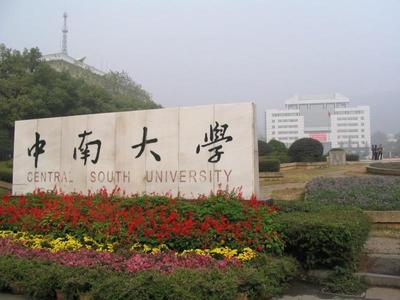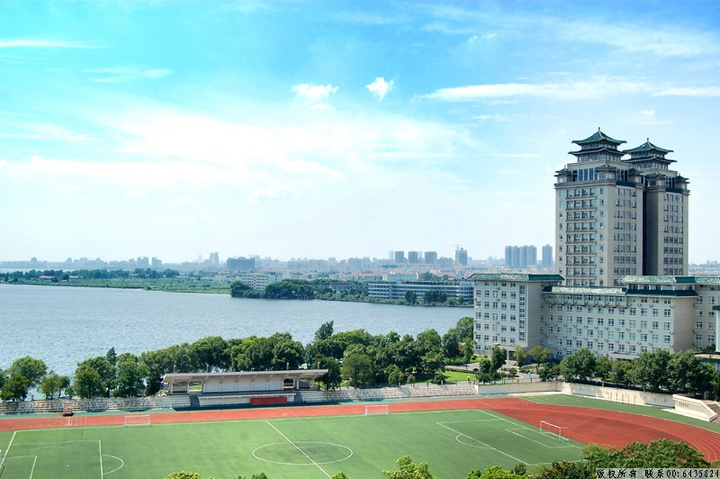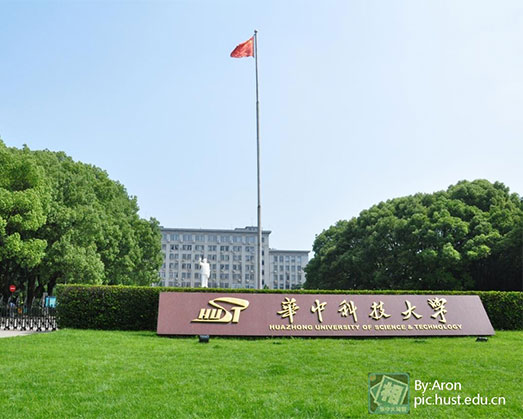Central South University
Situated in the famous historical and cultural city of Changsha, Central South University (CSU) is a comprehensive and national key university under the direct administration of the Ministry of Education of China. The University is among the first group admitted into both Project 211, a project of building national key universities and colleges for the 21st century, and Project 985, a joint constructive project of building world-class universities co-sponsored by the Chinese central government and local governments.
CSU covers 11 fields of study, including engineering, science, medicine, management, literature, law, economics, philosophy, education, history and agriculture, and offers military science as well. It consists of 30 colleges offering 83 programs for bachelors’ degrees, and a graduate school comprising a number of national key disciplines, including 6 at first-level (ranking 8th in China), 12 at second-level and one in development. 27 first-level disciplines are authorized to confer masters and doctoral degrees. 191 programs are offered for doctoral degrees, 307 programs for masters’ degrees and 19 programs for professional masters’ degrees.CSU also has 24 post-doctoral exchange centers, ranking 9th among Chinese universities and colleges in term of the numbers. Situated in the famous historical and cultural city of Changsha, Central South University (CSU) is a comprehensive and national key university under the direct administration of the Ministry of Education of China. The University is among the first group admitted into both Project 211, a project of building national key universities and colleges for the 21stcentury, and Project 985, a joint constructive project of building world-class universities co-sponsored by the Chinese central government and local governments. Gao Wenbing is the Party Secretary of the CSU Committee and Huang Baiyun, member of the Chinese Academy of Engineering, is CSU President. Approved by the State Council, CSU was established on April 29, 2000 by merging three separate universities: Hunan Medical University (HMU), Changsha Railway University (CRU), and Central South University of Technology (CSUT). CSU covers an area of 5,117 mu (341 hectares). HMU was formerly under the administration of the Ministry of Health.Its history dates back to 1914 when Xiangya Medical College was founded through the joint efforts of Hunan Yuqun Society and the Yale-China Association in the United States. CRU, which was one of the universities under the administration of the Ministry of Railways,initially restructured in 1953 as Central South College of Civil Engineering and Architecture, was established in 1960 based on some of its predecessor’s departments, teaching and research divisions. CSUT, which was one of universities under the administration of the Ministry of Education,was originally named Central South Institute of Mining and Metallurgy in 1952 when a nationwide restructuring of institutes of higher education began. It was incorporated based on the disciplines of mining and metallurgy from six universities, which including Wuhan University, Sun Yat-sen University, Guangxi University, Hunan University, Nanchang University and Beijing College of Technology. CSU covers 11 fields of study, including engineering, science, medicine, management, literature, law, economics, philosophy, education, history and agriculture, and offers military science as well. It consists of 30 colleges offering 83 programs for bachelors’ degrees, and a graduate school comprising a number of national key disciplines, including 6 at first-level (ranking 8thin China), 12 at second-level and one in development. 27 first-level disciplines are authorized to confer masters and doctoral degrees. 191 programs are offered for doctoral degrees, 307 programs for masters’ degrees and 19 programs for professional masters’ degrees.CSU also has 24 post-doctoral exchange centers, ranking 9thamong Chinese universities and colleges in term of the numbers.



News&Opinion
 more
more- OFFICIAL LAUNCH OF BFSU ACADEMY OF REGIONAL AND ...
- G20: Hangzhou wins world's attention
- How To Buy Happiness - The Investment Of Travel
- Goodbye, Rio; hello, China
- 2016 Yunnan-Thailand Education cooperation and e...
- Nice to meet you---你好中文!
- China sending largest-ever team to Rio
- Going to a top university ’no guarantee of getti...
Policy&Laws
How to Get one Job in China---Beijing policy
A foreigner, right, shows his job application form at a human resour...
Guilin to offer 72-hour visa-free stays
GUILIN - The city of Guilin in South China's Guangxi Zhuang autonomo...
further strengthening the visa regulation of int...
After the promulgation of new Immigration Control Act in China, Entr...





 print
print  email
email  Favorite
Favorite  Transtlate
Transtlate 








